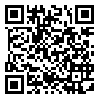Volume 8, Issue 2 (2008)
QJER 2008, 8(2): 119-132 |
Back to browse issues page
Download citation:
BibTeX | RIS | EndNote | Medlars | ProCite | Reference Manager | RefWorks
Send citation to:



BibTeX | RIS | EndNote | Medlars | ProCite | Reference Manager | RefWorks
Send citation to:
Homayounefar M, Tavana H. Application of Revealed Preferences Methodology for Testing Rational Behavior of Rural Households. QJER 2008; 8 (2) :119-132
URL: http://ecor.modares.ac.ir/article-18-8050-en.html
URL: http://ecor.modares.ac.ir/article-18-8050-en.html
1- University of Zabol
Abstract: (5736 Views)
Consumer behavior analysis is a fundamental issue in economics. The most prominent methodology that economists use to attribute preferences according to this principle is the revealed preference concept. Therefore, neoclassical utility function is capable to test the rational behavior hypothesis of consumer.
In this paper, we formalize a method of revealed preferences in place of neoclassical utility function to test the hypothesis of rational behavior using the Iranian rural households’ consumption data over the period 1982-2005. According to results, we didn't detect any violations in the whole consumption data. But in agriculture commodities group, we detected 4 violations using generalized Afriat index ascribed to measurement error. overall, the findings of the study confirm the hypothesis of rational behavior. Thus, there exists a utility function that is non-satiated, continuous, monotonic, and concave that rationalizes the consumption data of rural households in Iran
Keywords: Generalized Axiom of Revealed Preference, Neoclassical Utility Function, Afriat Theorem, Generalized Afriat Index
Received: 2007/09/12 | Accepted: 2008/01/13 | Published: 2008/06/22
| Rights and permissions | |
 |
This work is licensed under a Creative Commons Attribution-NonCommercial 4.0 International License. |







